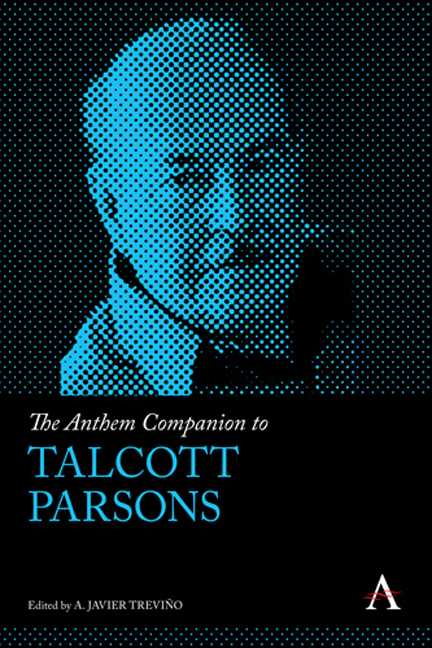Book contents
- Frontmatter
- Content
- Introduction
- Part I Political and Humanist Concerns
- Chapter One Fighting the Deadly Enemy of Democracy: Sociology against National Socialism
- Chapter Two Parsons's Critique of the Power Elite Thesis: Foundations for a Comprehensive Theory of Power
- Chapter Three The Expressive Revolution and the University: Parsons vs. Gouldner
- Chapter Four Parsons, Psychoanalysis and the Therapeutic Relationship
- Chapter Five Meanings of Life and Death: Insights of the Human Condition Paradigm
- Chapter Six Luhmann's Reception of Parsons
- Part II Social Evolution and the American Societal Community
- Contributors
- Index
Chapter Three - The Expressive Revolution and the University: Parsons vs. Gouldner
from Part I - Political and Humanist Concerns
Published online by Cambridge University Press: 22 July 2017
- Frontmatter
- Content
- Introduction
- Part I Political and Humanist Concerns
- Chapter One Fighting the Deadly Enemy of Democracy: Sociology against National Socialism
- Chapter Two Parsons's Critique of the Power Elite Thesis: Foundations for a Comprehensive Theory of Power
- Chapter Three The Expressive Revolution and the University: Parsons vs. Gouldner
- Chapter Four Parsons, Psychoanalysis and the Therapeutic Relationship
- Chapter Five Meanings of Life and Death: Insights of the Human Condition Paradigm
- Chapter Six Luhmann's Reception of Parsons
- Part II Social Evolution and the American Societal Community
- Contributors
- Index
Summary
At a seminar held in his honor at Brown University in 1973, Talcott Parsons was asked by a colleague, “Why don't you study what's right under your nose, your own profession, the university as a social organization?” Parsons went on to announce that a “fat volume” on just this topic was being prepared for publication. The book was The American University, published in 1973 with coauthor Gerald M. Platt.
Although he had published on academic issues off and on since the late 1950s—see, for example, his paper on “The School Class as a Social System: Some of Its Functions in American Society”—it was not until the late 1960s that Parsons engaged in a vigorous and sustained study of higher education. He believed that within the educational revolution itself, with its emphasis on cognitive rationality, there was a tension that championed expressive and affective components. These affective components were first identified by Parsons as the expressive revolution of religion and religious assertion, but later he interpreted elements of this expressive revolution as manifested within the university system itself, epitomized in student unrest culminating in high-profile disturbances in American universities and elsewhere beginning in the 1960s. Embedded within this demonstrative project is a Kantian universalism that sees civil society as developing toward the inclusion of an increasing percentage of its members, which is, in essence, the hallmark of modernity. As Parsons argued,
I therefore suggest that there has been an important, if you will, “dialectical” relationship between the process we call the development of the educational revolution and that of the expressive revolution. Indeed, I contend that there is a striking parallel between the processes and interdependences of the industrial and the democratic revolutions in the late eighteenth and through a great deal of the nineteenth centuries, and that of the educational and expressive revolutions of the twentieth century.
Parsons partially explained this tension cybernetically, namely, with the explosion in higher education concomitant to the educational revolution; there was an inflation of its key circulating medium—intelligence—and that on some important levels student radicals of the 1960s marshaled affective and emotional responses to this inflation in the form of protests and other campus disturbances.
- Type
- Chapter
- Information
- The Anthem Companion to Talcott Parsons , pp. 55 - 72Publisher: Anthem PressPrint publication year: 2016



